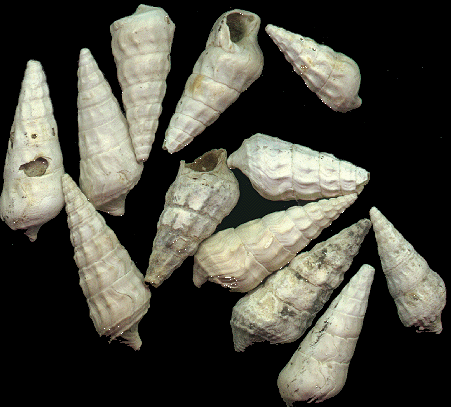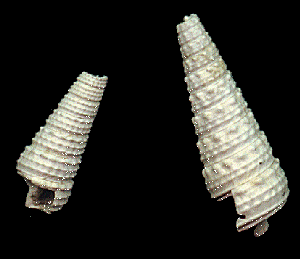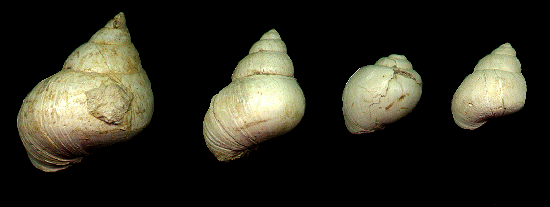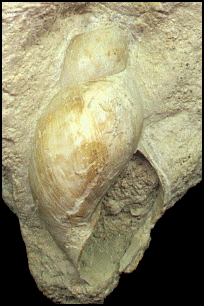Eocene Gastropods.

Just to the east of Alum Bay there is a mass of crumbling sandstome that has been eroded from Heddon Hill. This is a fresh water deposit and contains the remains of many gastropods. The image above is of the common Batillaria concava.

The two specimens in this image are much less common. The shell on the left is Potamides vagus and the one on the right is Tympanotonos funatus.
There are also the shells of snails that would not look out of place munching on the plants in your garden.

From left to right they are Viviparous angulosus, Viviparous lentus, Globularia patula and Globularia grossa.

As can seen from the items shown above, many of the specimens that are found in this area are fairly clean and require little work other than a scrub with a toothbrush. There are others that are still mostly surrounded by rock and need a bit more effort. This was the case with this specimen of Galba longiscata.
As you can see from the quantity and variety of specimens shown here, this is a very prolific site. New items are continually revealed as the soft cliffs are eroded.






